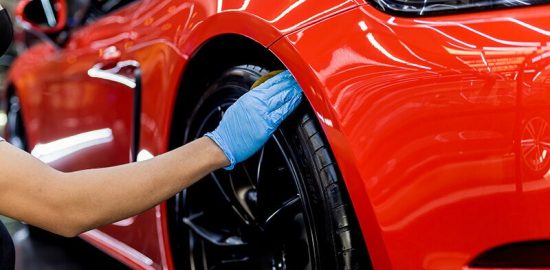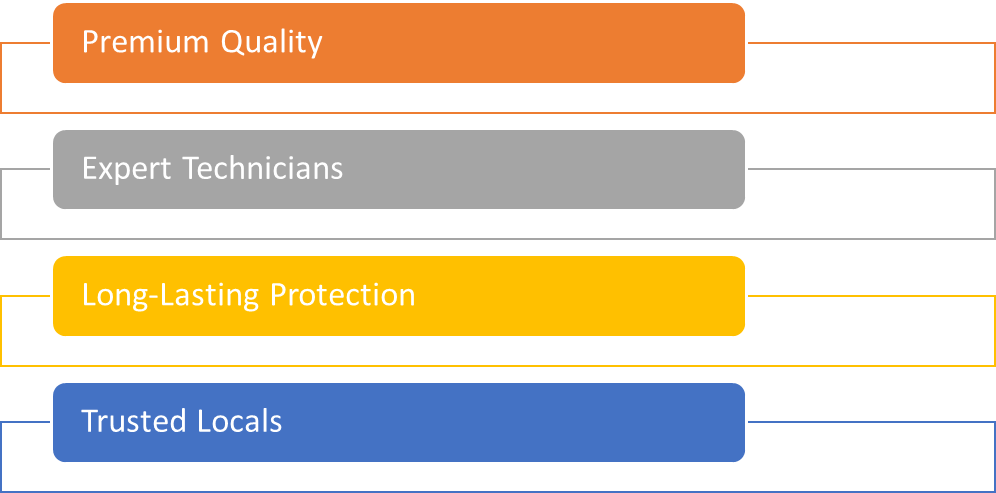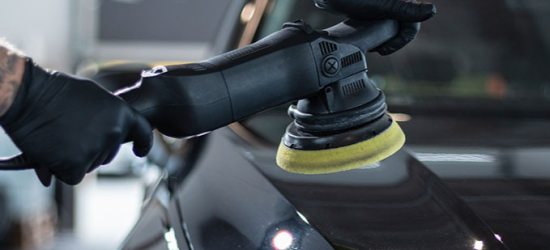Shiny paint catches attention. However, small habits can scratch, stain, and dull that finish. Many drivers repeat the same mistakes. Therefore, learning a few basics helps protect gloss and value. Auto detailing mistakes often happen during routine washes and can cause lasting damage.
Hard water spots quickly etch the clear coat, dulling the shine over time. Rough towels grind grit into swirls. Harsh soap dries plastics and trim.
However, there is good news. Simple changes deliver safer results fast. Learn what harms your car’s paint, why it occurs, and how to repair it with simple, proven methods. At Riverside Shine, every insight is grounded in real-world detailing experience.

Sunlight speeds drying. Unfortunately, it also bakes minerals onto paint. Water spots form and etch the clear coat. Then, scrubbing those spots creates more scratches. Instead, wash in shade or at dawn and dusk. Rinse panels often so soap never dries. Use cool water on hot days to reduce flash drying. After rinsing, dry with clean microfiber towels. Work top to bottom and panel by panel. Finally, use a drying aid for slick, safe passes. Because heat is the real enemy, plan your wash around the sun. Your paint will thank you with fewer marks and stains.
Quick “sun-safe” checklist

Many problems start before the wash even begins. First, skipping a pre-rinse leaves grit on the paint. That grit causes scratches during contact. Second, using dish soap strips wax and dries the trim. Third, old sponges trap sand and drag it across panels. Additionally, mixing towels for wheels and paint spreads iron dust. Because cross-contamination is common, keep separate tools for each task. Small steps often lead to big paint problems—mixing up buckets, bottles, or towels is one of those silent auto detailing mistakes. Replace worn mitts often. Finally, slow down. Rushing multiplies errors and adds deep scratches you will later need to correct.
Why drivers trust us:
Bad products and poor methods can turn cleaning into cutting. Cheap towels shed lint and scuff soft, clear coats. Aggressive brushes gouge paint around badges and vents—meanwhile, strong all-purpose cleaners bleach, trim, and stain plastics. In many garages, paint damage detailing begins with the wrong tool in the right place. Choose pH-balanced soap, soft mitts, and grit guards. Tape delicate edges before heavy work. Test chemicals on an unseen spot first. Then, follow dwell times and rinse well. Safer products and gentle technique protect gloss. Over time, fewer scratches mean less polishing and more shine.
Task | Safer Choice | Risky Choice |
Wash | Microfiber mitt | Kitchen sponge |
Dry | Plush microfiber | Old bath towel |
Trim | Mild cleaner + brush | Harsh degreaser |
Swirls are tiny arcs that dull reflections. They come from dirt pressed into paint during contact. Therefore, start with a strong pre-rinse to float grit away. Use the two-bucket method with grit guards. Wash in straight lines, not circles. Flip your mitt often and rinse it well. Dry with light pressure and a clean towel edge. Avoid cheap, quick detailers that add drag or haze. When needed, use a clay bar with plenty of lubricant. Finally, store towels in a clean bin to keep dust away. Practiced together, these steps show how to avoid swirl marks in everyday care.

Pros focus on process, not speed. First, they map a workflow: wheels, pre-rinse, foam, wash, dry, then protect. Next, they protect the paint with safe tools. They also inspect under bright light to spot missed spots. For stubborn tar or bugs, they soften first, then wipe. Because failure begins with friction, they add lubrication everywhere. Useful car detailer tips include labeling towels by task and washing them separately. They also keep a “last-touch” towel sealed in a clean bag. Finally, they plan for local conditions.

Many problems start before the wash even begins. First, skipping a pre-rinse leaves grit on the paint. That grit causes scratches during contact. Second, using dish soap strips wax and dries the trim. Third, old sponges trap sand and drag it across panels. Additionally, mixing towels for wheels and paint spreads iron dust. Because cross-contamination is common, keep separate tools for each task. Small steps often lead to big paint problems—mixing up buckets, bottles, or towels is one of those silent auto detailing mistakes. Replace worn mitts often. Finally, slow down. Rushing multiplies errors and adds deep scratches you will later need to correct.
Why drivers trust us:

Detailing blends cleaning, correction, and protection. Cleaning removes dirt without scratching. Correction levels light defects with polish—protection shields against UV, water, and fallout. However, skipping steps leads to dull results. Start with safe decontamination: pre-rinse, foam, wash, and clay. Then assess paint under a bright, neutral light. Moreover, where weather and road debris take a toll on vehicle finishes, auto detailing in South Deerfield MA, plays a key role in maintaining shine and protection. Correct the haze with mild polish and a finishing pad if you see haze. Next, add protection—wax, sealant, or coating. Maintain with gentle washes and quick toppers. In practice, consistent auto detailing prevents heavy correction. Small, regular care keeps paint crisp, clear, and glossy for the long term.

Not all defects need heavy cutting. Many swirls respond to a fine polish and a soft pad. First, test a mild combo on a small spot. If defects remain, step up slowly. Work cool, clean, and patient. Wipe residue gently between passes. Because the clear coat is thin, protect it as a resource. For deeper scratches, measure thickness before heavy work. Moreover, locals searching for the best paint correction near South Deerfield should ask for a test panel and a clear plan. If you prefer a proven studio, Riverside Shine is known for careful process and measured results without overselling aggressive steps.
What we correct:

Pros fix sun wash by scheduling shade or low sun hours. They prevent etching with cool water and fast drying. They remove bad soap from the mix and switch to pH-balanced formulas. They also stop cross-contamination with labeled buckets and towel sets. For etched spots, they spot-polish with a fine pad. Then they protect the paint to slow future damage. If paint damage detailing is required, experts test different polish and pad combinations to restore the surface safely. They document each step and measure results under consistent light. With method and patience, they undo most harm and leave safer habits to follow.

Great shine is not an accident. It comes from calm steps and good tools. Most auto detailing mistakes vanish when the routine improves. Wash cool. Rinse often. Dry gently. Then protect what you cleaned. Over months, your finish will stay bright with fewer swirls. When defects appear, correct them with a light touch first. Ask questions and test slowly before strong polishing. If the work feels risky, seek skilled help and a clear plan. Done right, simple care preserves value and beauty for years. Your paint will reflect effort, not errors, every time the sun hits.
Book your expert auto detailing service with Riverside Shine today—where your paint gets the love it deserves.